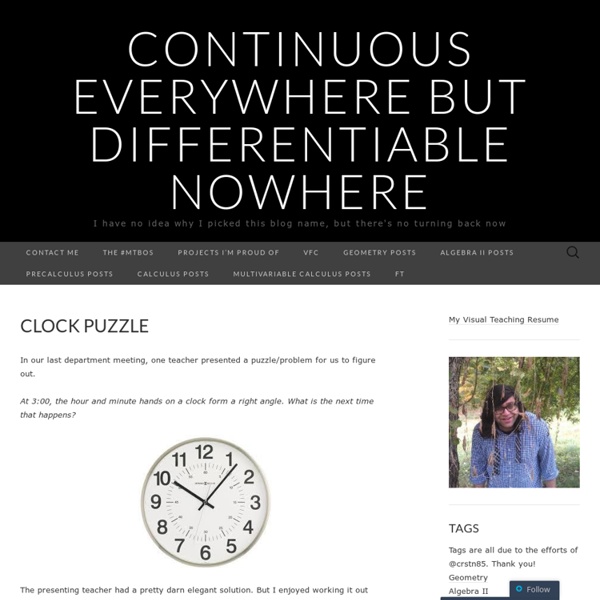Zoom
Trash
Related:



f(t) dy/dan Walking in Mathland Yes. The answer is yes you can study mathematics. There is apparently a rumor going around telling students that math cannot be studied. This is a lie. Run from the darkness. The issue is students need to learn how to study math. Cheat Sheet (See photo to the left)Start reviewing notes, power-points, textbook, or whatever form the material being tested was presented on and on a blank sheet of paper write out problems, equations, formulas, and helpful hints on the material you do not 100% understand. Flashcards This is a fabulous tool to use with units where there is vocabulary, properties, and formulas that will tested. YouTube VideosI have written of my love for YouTube as a teaching method I use in class so it should be not surprise that I am using it again. Bottom line...to study math you have to take time to study the math. Work with different strategies to see what works. How do you study mathematics?
Sweeney Math Mathematics Standards For more than a decade, research studies of mathematics education in high-performing countries have concluded that mathematics education in the United States must become substantially more focused and coherent in order to improve mathematics achievement in this country. To deliver on this promise, the mathematics standards are designed to address the problem of a curriculum that is “a mile wide and an inch deep.” These new standards build on the best of high-quality math standards from states across the country. The math standards provide clarity and specificity rather than broad general statements. In addition, the “sequence of topics and performances” that is outlined in a body of math standards must respect what is already known about how students learn. The Common Core concentrates on a clear set of math skills and concepts. These standards define what students should understand and be able to do in their study of mathematics.
Adventures in Teaching | Thoughts about the intellectually and emotionally demanding work of teaching Together with Pam Mason, I help to design professional development for Math for America Los Angeles. Right now we have about 85 Teaching Fellows and Master Teaching Fellows in our program. This year, we decided to implement something new to help “make thinking visible”–that’s my best version of what to call this thing. It’s not new, just new for us. Here’s what I mean by “making thinking visible.” We teachers use phrases like “Say your ‘because’s” as a signal to students and each other that we care about student thinking. Well, the same thing should be true for us teachers too. At least in Math for America Los Angeles, we haven’t been so good at that. But when we say “I like this lesson”, do we explain why to each other? When we say “I think students struggle here”, do we explain why? When we say “This unit is going to take 2 more days than we expected”, do we explain why? Some of the conversations behind these statements are actually the conversations we need to have with each other.